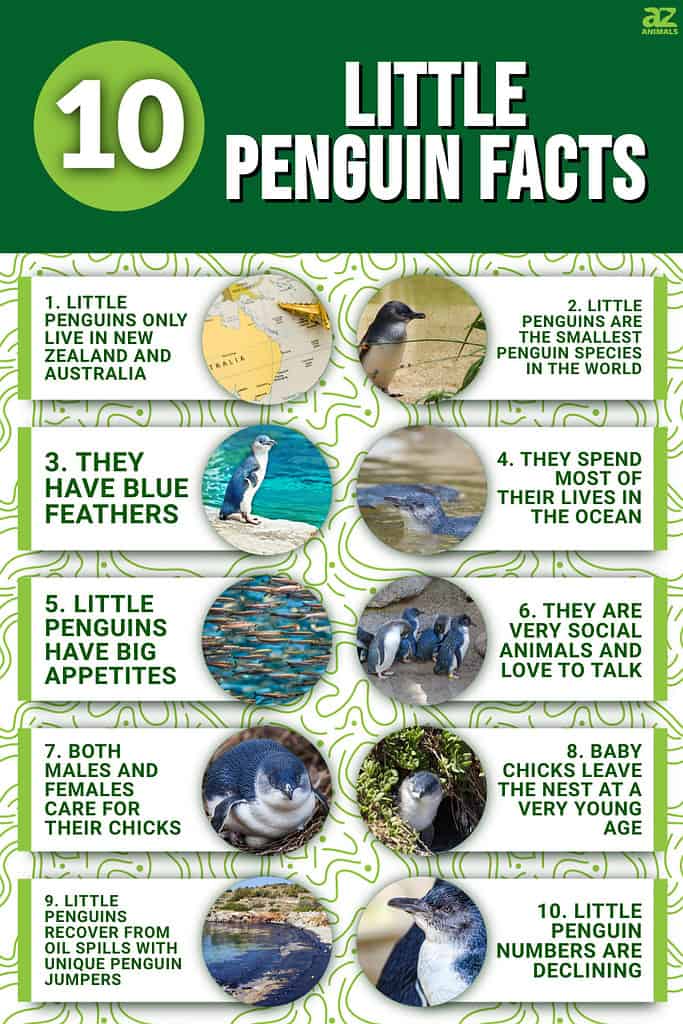
Penguins are very unique and peculiar animals. They are birds, and yet they can’t fly, and they spend most of their lives underwater! But one of the most spectacular and intriguing species of penguin in the world is the little penguin — often referred to as the fairy penguin. Its name alone suggests that there is something magical about this uniquely colored penguin. So, let’s take a look at 10 incredible little penguin facts!
1. Little Penguins Only Live in New Zealand and Australia
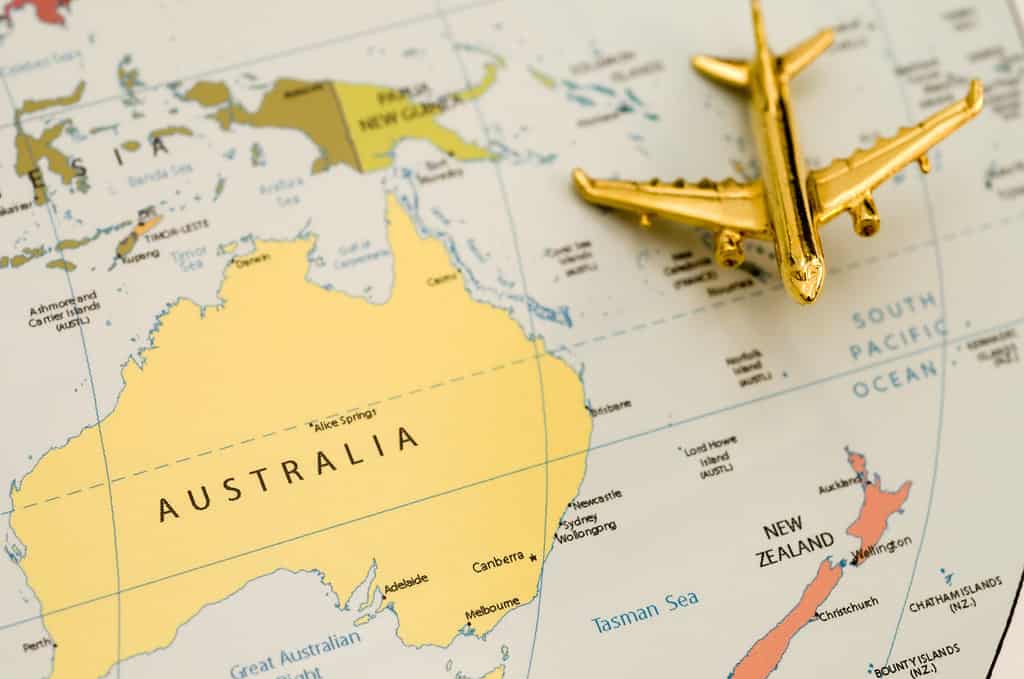
Little penguins are only found in Australia and New Zealand.
©Jesse Kunerth/Shutterstock.com
There are two separate species of little penguins and several subspecies. Little penguins (Eudyptula minor) live in New Zealand, while Australian little penguins (Eudyptula novaehollandiae) are native to Australia. Little penguins live throughout the coasts of New Zealand. However, they no longer live in Otago, which is on the east coast of South Island. Unfortunately, little penguins in Otago were hunted by humans and other nonnative predators and have since disappeared from the region. In New Zealand, little penguins are also called little blue penguins, blue penguins, and kororā.
As their name implies, Australian little penguins live in Australia. However, they also live in Otago, having moved in after the decline of the region’s original New Zealand little penguins. The largest population of these penguins can be found on the Australian island of Tasmania. Australian little penguins are often called fairy penguins due to their tiny size and unique coloring.
2. Little Penguins Are the Smallest Penguin Species in the World
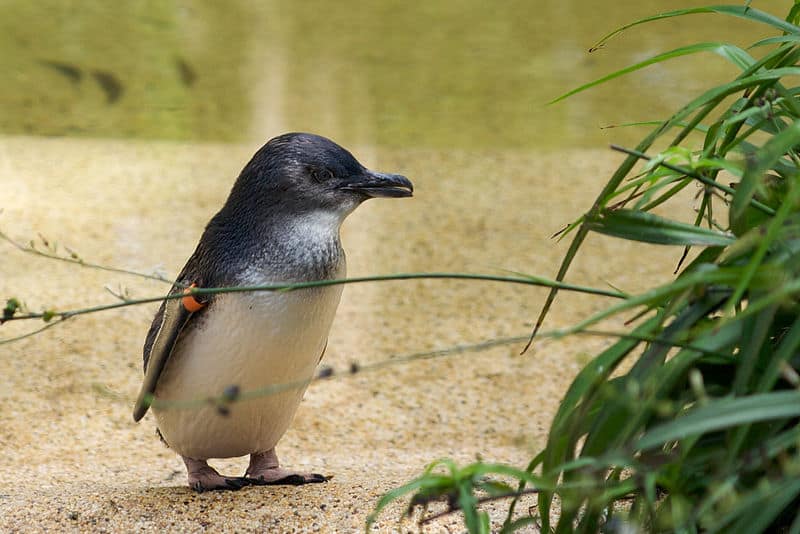
These tiny penguins only grow up to 12 or 13 inches tall and weigh just 3.3 pounds on average.
Aptly named, little penguins are the littlest species of penguin on the planet! These tiny penguins only grow up to 12 or 13 inches tall and weigh just 3.3 pounds on average. Like other penguin species, little penguins can’t fly, but they are excellent swimmers. However, little penguins look like they are “flying” through the ocean and can flap their flippers up to five times a second! These hummingbirds of the sea are also agile and acrobatic divers and can make 1,300 to 2,000 dives in a single day. On average they dive down to depths ranging from 32 feet to nearly 100 feet.
3. They Have Blue Feathers

Little penguins have blue feathers.
©Khoroshunova Olga/Shutterstock.com
There is only one penguin species on the planet that has blue feathers — the little penguin! That’s right, in addition to their uniquely small size, one of the most amazing facts about little penguins is that they have unusual blue feathers on their heads, backs, and flippers. Even their wide eyes are often a bluish-grey or pale silvery blue color. In addition to their beautiful blue coloring, the penguins’ chests and bellies are white. Their feet are pink and black, and they have long blackish-grey beaks.
The special blue and white coloring of their feathers helps little penguins to camouflage while they are in the water. Predators flying up above struggle to recognize the penguins against the dark deep blue of the ocean. And any predators swimming below the penguins can only see their white bellies, which helps the penguins to blend in with the light reflecting off the surface of the water.
4. They Spend Most of Their Lives in the Ocean
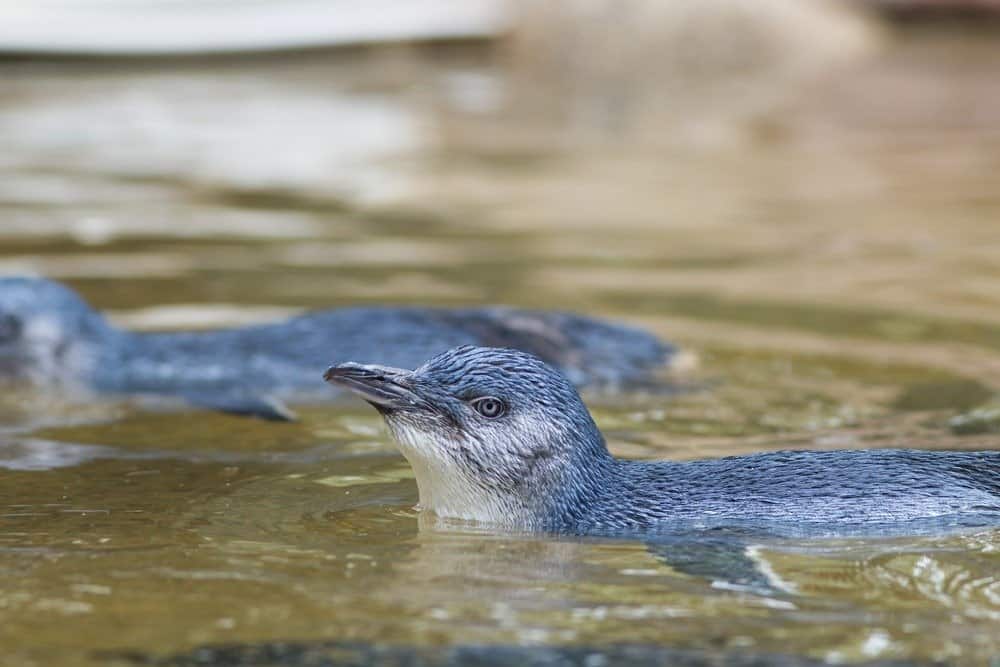
They have developed many unique adaptations that allow them to spend around 80% of their lives in the water!
©Libor Fousek/Shutterstock.com
Little penguins have mastered life at sea. They have developed many unique adaptations that allow them to spend around 80% of their lives in the water! For example, by using the specialized salt glands above their eyes, little penguins can extract salt their body gets from the seawater and expel it by sneezing or flicking it out of their nostrils.
In addition, little penguins have three eyelids — in addition to one on top and one on the bottom, they also have a clear eyelid. This third eyelid works like built-in goggles when the penguins are underwater. Little penguins also have around 10,000 densely insulated feathers that help keep them warm. Their feathers interlock and create a layer of insulating air that keeps the penguins from getting wet!
5. Little Penguins Have Big Appetites
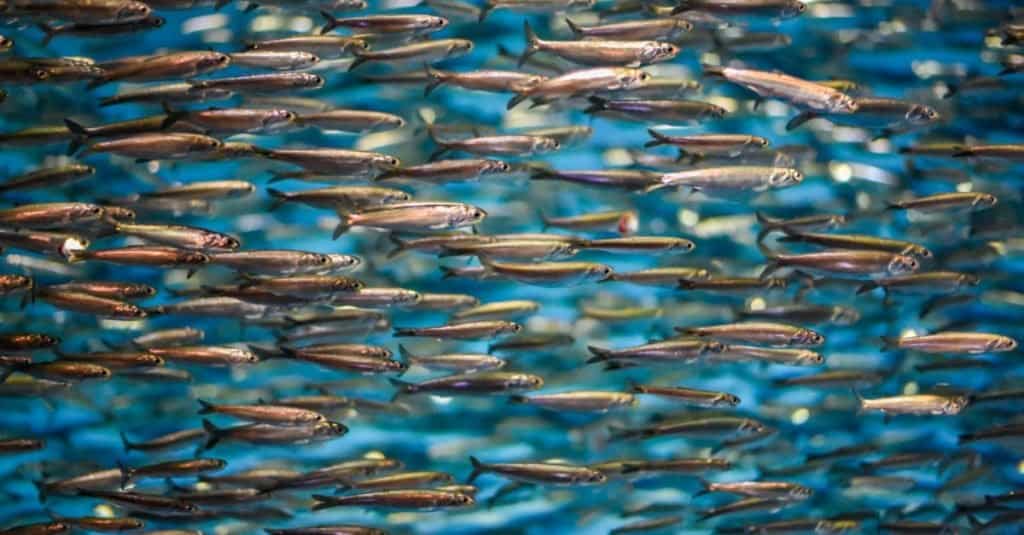
Little penguins have big appetites – and
anchovies
are a favorite!
©David A Litman/Shutterstock.com
They may be the smallest penguin in the world, but little penguins have really big appetites. A little penguin can eat 25% of its entire body weight in just one day! Little penguins feed on a variety of animals, like anchovies, warehou, red cod, pilchards, and even young barracuda. Mainly they eat small schooling fish, but they also enjoy squid and even sea jellies from time to time.
Little penguins have several unique adaptations for hunting marine animals. Their small beaks are hooked at the end and have sharp edges to make it easier to grab slippery sea creatures. In addition, the roof of their mouths has stiff spines that point backward to make it easier to swallow.
6. They Are Very Social Animals and Love to Talk
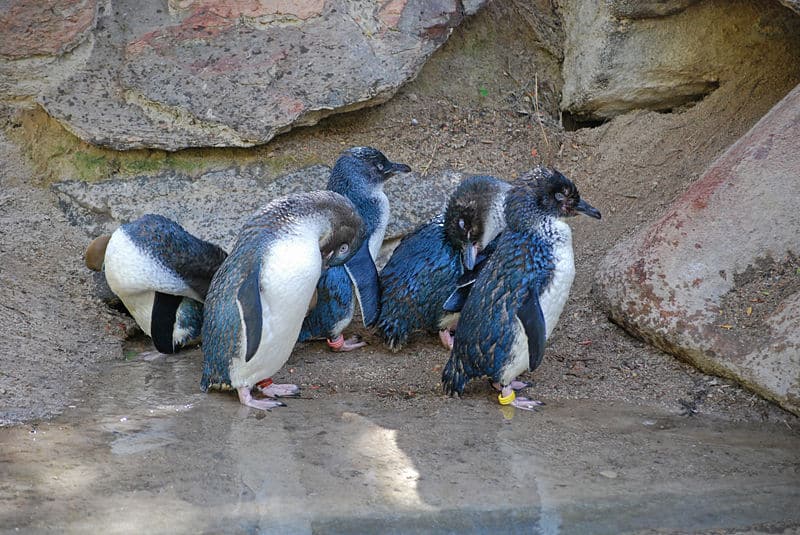
Little penguins are very social creatures and also use body language to express themselves and interact with one another.
Another incredible little penguin fact is that these little birds have very big voices! At night they produce a captivating chorus of cheeps, brays, hisses, squawks, barks, and growls as they communicate with one another. Male little penguins also use distinct vocalizations to attract females and protect their territory. Little penguins are very social creatures and also use body language to express themselves and interact with one another.
The calls of little penguins in both New Zealand and Australia sound very similar. However, researchers have found that they are actually quite different in terms of frequency, as well as exhalation and inhalation phrasing. They also did an experiment to see if the female penguins liked the local or non-local male vocal calls better. Females usually moved towards their regional call, suggesting they could recognize the difference and preferred their local dialect more!
7. Both Males and Females Care for Their Chicks
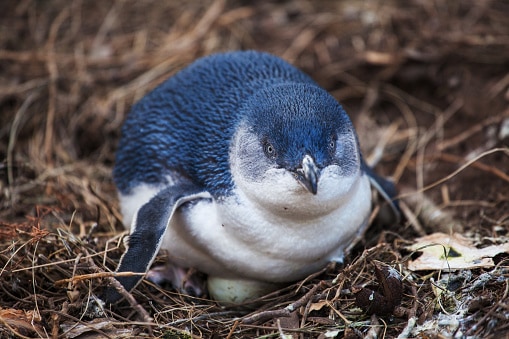
Both male and female little penguins incubate the eggs.
©StanislavBeloglazov/iStock via Getty Images
The breeding season for little penguins typically runs from August to February. After mating, female penguins lay two eggs in their nest, and both parents take turns keeping the eggs warm. After around 35 days the eggs hatch, revealing black chicks. The chicks are tiny and are not yet strong enough to lift their own heads. When they are around seven days old, however, they can fully open their eyes and move around a bit.
Baby chicks continue to stay in the nest while their parents take turns staying with them. When they are around four weeks old, the chicks are left to themselves in the nest while mom and dad go to the ocean to hunt for food. Parents can recognize each of their chicks’ individual piping voices, making it easy to find them even if they’ve wandered from their nest.
8. Baby Chicks Leave the Nest at a Very Young Age
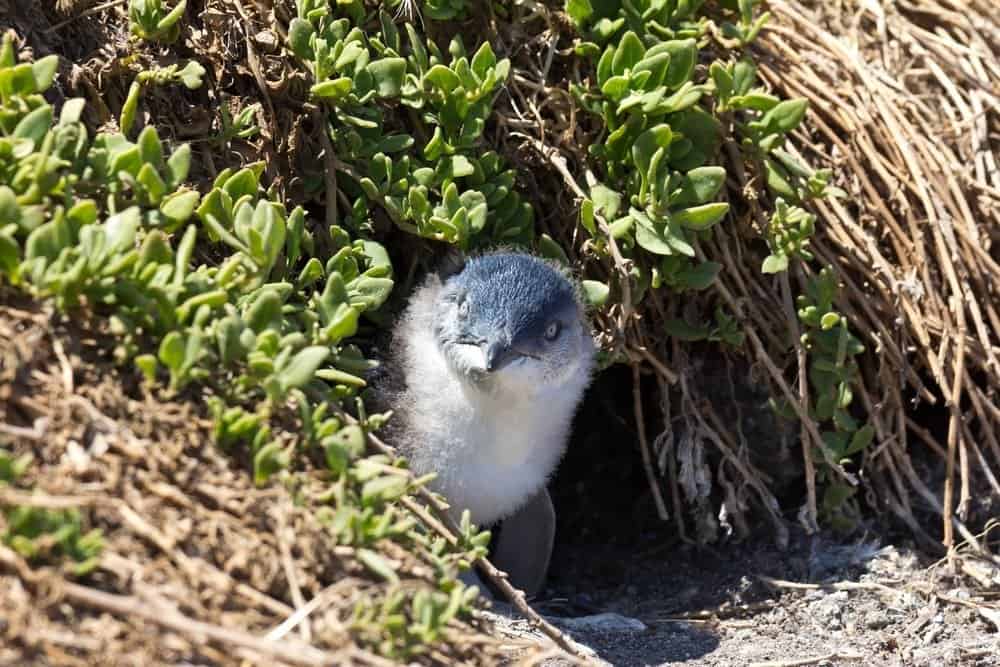
Baby chicks continue to stay in the nest until they are eight weeks old.
©Eugene Sim/Shutterstock.com
Although little penguin parents are excellent caregivers for the first several weeks of their chicks’ lives, once babies are eight weeks old, they are completely on their own. At this time, the chicks leave the safety and shelter of their nests and plunge into the ocean for the very first time. Their parents do not stick around to teach or guide them from this point forward. The young little penguins must learn to swim and survive all on their own.
For the first year of life, little penguins embark on a journey across vast expanses of the ocean. They travel further than even most adults as they explore the world beyond the nest. After their year-long adventure, the little penguins then return to their home colony with their newfound knowledge and experience.
9. Little Penguins Recover from Oil Spills with Unique Penguin Jumpers
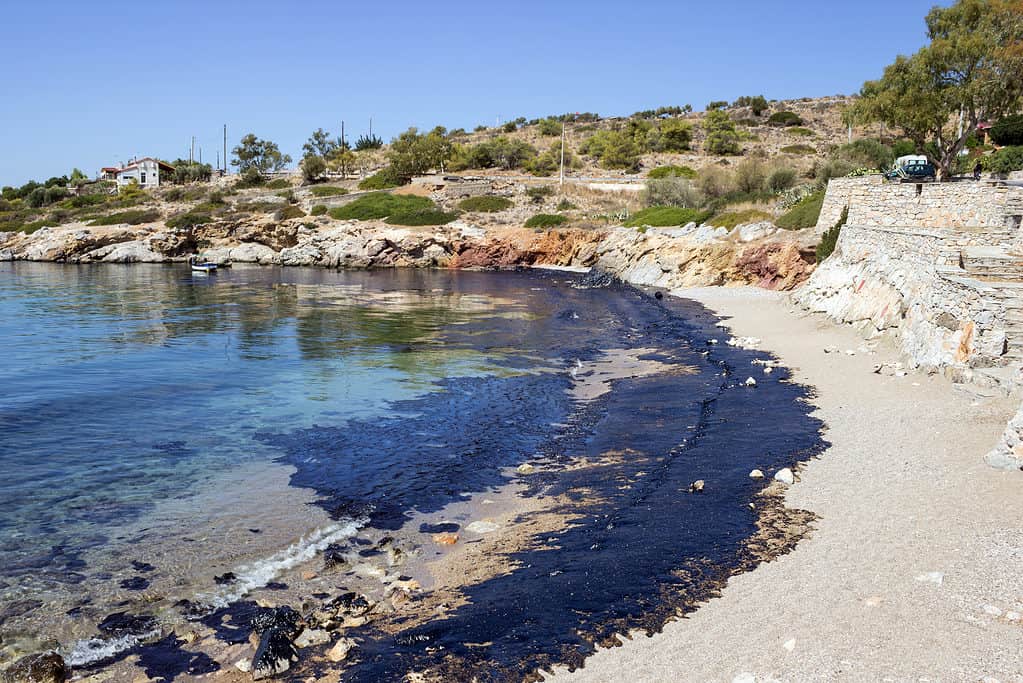
Oil spills are disastrous for little penguins.
©Korelidou Mila/Shutterstock.com
Unfortunately, little penguins are in serious danger when it comes to oil spills. Oil sticks to their feathers, making them more brittle, creating mats, and allowing water to get in. This takes away the penguin’s warm insulation, leaving them very cold and sometimes too heavy to go out and hunt for food. Penguins with untreated oily feathers often die from the cold or from starvation. Another problem is that oil is very difficult to remove from the feathers of a little penguin. The penguin will do their best to clean it off, but they end up swallowing some of the oil in the process, which can be fatal. It takes very little oil to kill a little penguin — less than just a patch about the size of a thumbnail!
This is where special “penguin jumpers” comes into play. These knitted garments are placed on little penguins to keep them from trying to clean off the oil themselves. Wearing a penguin jumper protects the birds while rehabilitators work to clean their feathers and help them recover from the ordeal. For example, a major oil spill near Australia’s Phillip Island in 2001 affected 438 little penguins, who were tragically covered in oil. However, thanks to these special penguin jumpers, 96% of the little penguins were successfully cleaned, healed, and released back into the wild!
10. Little Penguin Numbers Are Declining
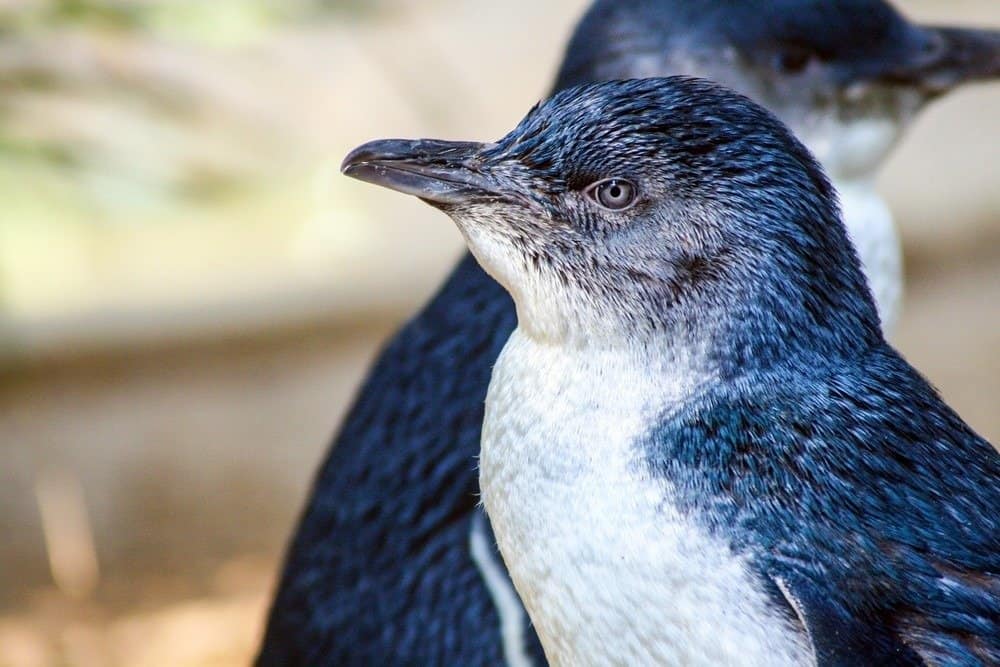
Fortunately, humans are continually looking for ways to protect their amazing little penguins.
©berm_teerawat/Shutterstock.com
Life isn’t easy when you’re a little penguin. These adorable animals are small and make easy targets for predators like sea eagles, Pacific gulls, and fur seals — especially when they waddle back home after a long day collecting food in the ocean. In addition, as humans continually encroach on and develop the areas near little penguins, they disrupt the birds’ lives through habitat destruction. They also introduce non-native predators like cats, foxes, and dogs, which are detrimental to penguin populations. Even the smell of these predators can leave a little penguin colony on edge and stop them from breeding.
Fortunately, humans are continually looking for ways to protect their amazing little penguins. A unique example is a peculiar tactic currently being used on Australia’s small Middle Island. Back in 2000, sea currents led to an increased build-up of sand, allowing foxes to cross over into the area. The foxes killed hundreds of the island’s little penguins over a very short period of time.
However, a chicken farmer named Swampy Marsh volunteered his own Maremma sheepdogs to act as a protective force for Middle Island’s vulnerable little penguins. Today, a handful of these dogs on the island is all that it takes to keep the little penguins safe from harm!
The photo featured at the top of this post is © Khoroshunova Olga/Shutterstock.com
FAQs (Frequently Asked Questions)
Is a little penguin the same as a fairy penguin?
For a long time, scientists thought that the little penguins in Australia (also known as fairy penguins) were a subspecies of the little penguins in New Zealand. However, genetic analysis has since shown that these two groups of penguins are actually separate species.
How long do little penguins live?
In the wild, little penguins typically live six to seven years on average. However, in captivity, they can live much longer. In fact, the oldest little penguin on record turned 21 in 2022!
Thank you for reading! Have some feedback for us? Contact the AZ Animals editorial team.







